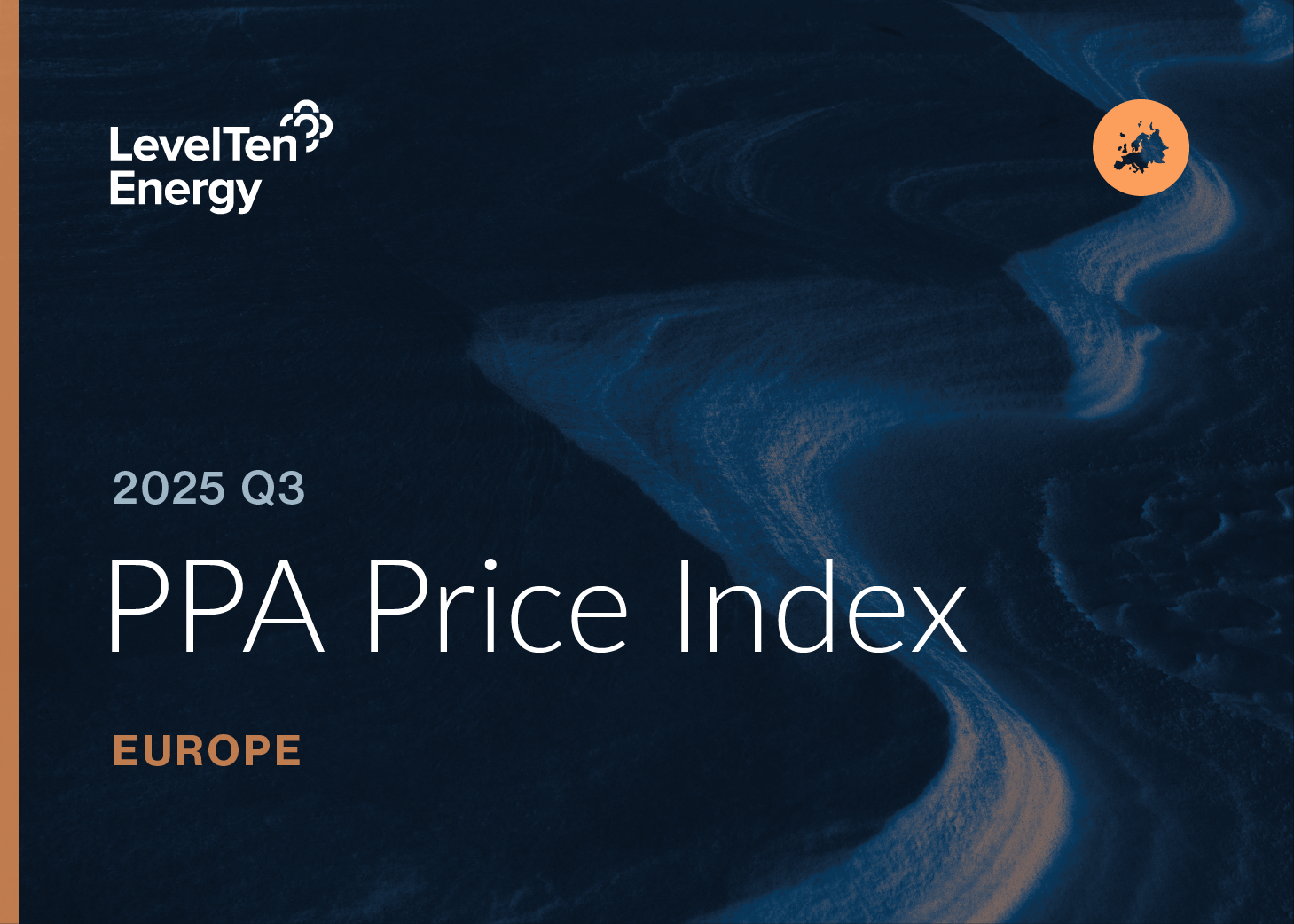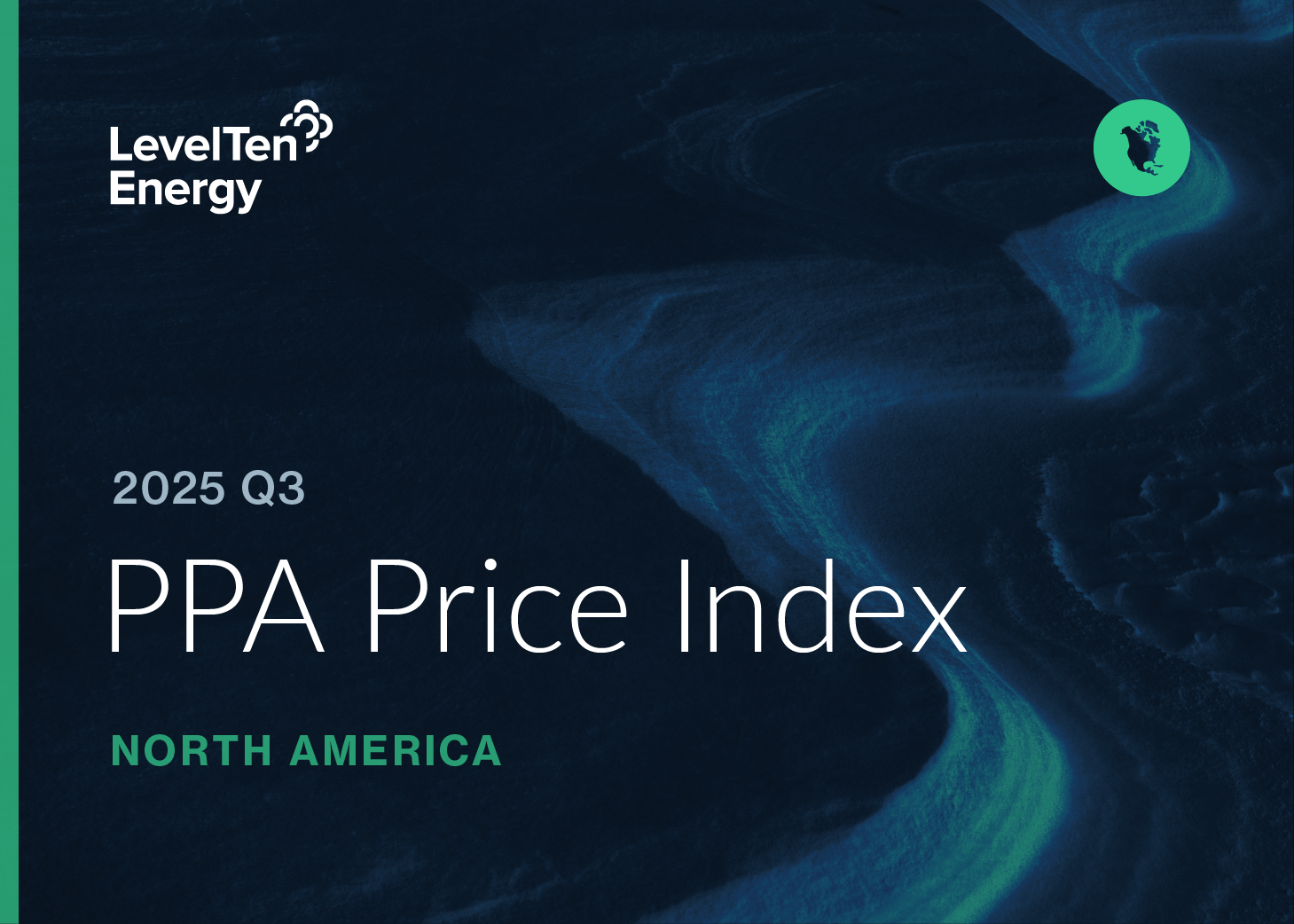Wind and solar PPA prices rose last quarter according to LevelTen’s latest PPA Price Index report
LevelTen Energy’s Q2 North American PPA Price Index Report, which is now available for subscribers, shows modest price increases for solar and wind power purchase agreements (PPAs), as the supply of clean energy projects struggles to keep pace with demand.
Here are four key takeaways from this quarter’s report:
- Solar PPA Prices Rose in Q2
After a modest 1% drop in Q1, North American solar PPA prices rose by more than 3% in Q2. This rising trend underscores the development challenges that are collectively placing upward pressure on solar PPA prices across North American markets.
A variety of obstacles continue to challenge solar development across North America, including long interconnection queues and permitting difficulties. But in recent months, additional uncertainties have been introduced through the expansion of tariffs on Chinese PV components, as well as a new investigation into allegations of duty circumvention and dumping practices from PV component producers in Southeast Asia. These events illustrate a trade law environment that is growing increasingly challenging for solar developers in the United States. The added costs for projects utilizing duty-subjected components are folded into PPA prices — which may have contributed to this quarter’s rising solar price trend.
- Wind PPA Prices Surged Upward
P25 wind PPA prices in North America rose by 7% in Q2, the third-consecutive quarter of rising wind prices. Year over year, P25 wind prices on LevelTen’s PPA Price Index have increased by 13.5%.
Prices rose in every wind market on our Q2 Index, but SPP drove the trend with a particularly robust upward price surge. US wind development continues to face an ongoing challenge of dwindling land availability, as many sites with the strongest wind resources have already been built on and community opposition is strong in many regions. Developers in the solar and wind sectors alike have also relayed to LevelTen that, in the face of an increase in adverse weather events like tornadoes, wildfires, floods, and hurricanes, insurance premiums for clean energy projects have also risen precipitously in recent quarters. In some markets, like MISO and SPP, insurance costs are reported to have gone up by three-fold: added expenses developers are likely incorporating into PPA prices. Nonetheless, demand for wind capacity remains high because of its generation shape, particularly among tech companies looking to power data centers during nighttime hours.
- Tariff and AD/CVD Uncertainties Cast Long Shadows on the Industry
US solar developers have had no shortage of upstream complexities to navigate in recent years. Aside from severe supply chain disruptions during the first few years of the pandemic, multiple developments in US trade policy have created an ever-evolving environment to which solar developers have needed to continually adapt.
In May, the Biden administration updated several tariffs on Chinese PV components and removed an existing exemption for bi-facial modules. And in April, a coalition of US solar component manufacturers submitted a petition to the US International Trade Commission (ITC) seeking new duties on solar cells and modules from producers in four Southeast Asian countries that had previously been investigated and found guilty of dumping and tariff circumvention. With the Commission affirming the petition’s validity in June, the Department of Commerce will now undertake a months-long investigation that may well culminate in more tariffs for PV components from Asia. For a deep dive into the evolving regulatory landscape for US solar, download the full report.
- PPA Counterparties Forge Ahead
PPA market participants have continued to find innovative ways to mitigate risks and get deals done amid market uncertainty. More recently, this has been embodied by an uptick in the use of contractual elements that address an array of development risks, specifically through the employment of conditions precedent (CPs) and indexation in PPA contracts. CPs provide developers with contractual “offramps” should unlikely but untenably adverse events occur during the development journey. And more counterparties are indexing subcomponents of PPA price to metrics like tariffs or interest rates, allowing the PPA price to flex up or down in light of future shifts in these important factors. These instruments provide some future-proofing that is helping deals continue to get done.
Major buyers are continuing with large procurements. With US electricity needs expected to surge in the coming years, demand for clean energy is set to rise substantially, providing a compelling reason for prospective buyers to enter the market soon.
Subscribers of the PPA Price Index can log in to the LevelTen Platform to read the full report. Not a subscriber? Contact us today to get access.


.png)



